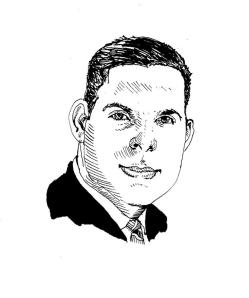 The Board of Governors of the Federal Reserve released the minutes of the September meeting of the Federal Open Market Committee (FOMC) last Wednesday afternoon. The final authority on domestic monetary policy is arguably the most reserved of any institution in its choice of words. And with good reason: Fortunes can be made and lost in the markets’ interpretations of the subtext of an FOMC statement. Given its well-deserved reputation for cautious semantics, the FOMC’s improving characterization of economic and financial market conditions implies that real improvements are at hand.
The Board of Governors of the Federal Reserve released the minutes of the September meeting of the Federal Open Market Committee (FOMC) last Wednesday afternoon. The final authority on domestic monetary policy is arguably the most reserved of any institution in its choice of words. And with good reason: Fortunes can be made and lost in the markets’ interpretations of the subtext of an FOMC statement. Given its well-deserved reputation for cautious semantics, the FOMC’s improving characterization of economic and financial market conditions implies that real improvements are at hand.
Consistent with leading indicators from earlier this year, evidence of a thaw in business activity and investment flows is apparent across a breadth of coincident economic measures. The Federal Reserve staff’s review of economic conditions cited several positive trends, including rising factory output in July and August and a modest increase in household spending independent of the temporary rise in automobile purchases. House prices and sales volumes have risen from their lows, and job losses have moderated substantially from late 2008 and early 2009. At least for the time being, consumer price inflation remains within a manageable range.
While some drags on the economy remain entrenched, the prevailing view among the Fed’s economists is that the preponderance of the data weighs in favor of a resumption in growth. As a result, the Fed has revised its outlook for late 2009 and 2010, citing new data that “indicate a more noticeable upturn than anticipated at the time of the August meeting.”
The new projections show real GDP growth for the second half of 2009 and a slow acceleration of output growth in 2010 and 2011. The Fed now anticipates that the national unemployment rate will fall to 9.25 percent at year-end 2010 and to approximately 8 percent at year-end 2011. In spite of a rise in capacity utilization, core inflation is projected to slow.
EVEN APART FROM ITS benign outlook for inflation, the Fed’s assessment of prospective economic conditions affords ample opportunity for disagreement. Fueling the occasion for debate, differing interpretations of the evidence are matched with different definitions for the recession. Contrary to popular notions, the National Bureau of Economic Research—the Cambridge, Mass.–based body tasked with dating economic cycles—does not define a recession as two consecutive quarters of falling real GDP. The NBER’s formula is more ambiguous, defining a recession as “a significant decline in economic activity spread across the economy, lasting more than a few months, normally visible in real GDP, real income, employment, industrial production, and wholesale-retail sales.”


